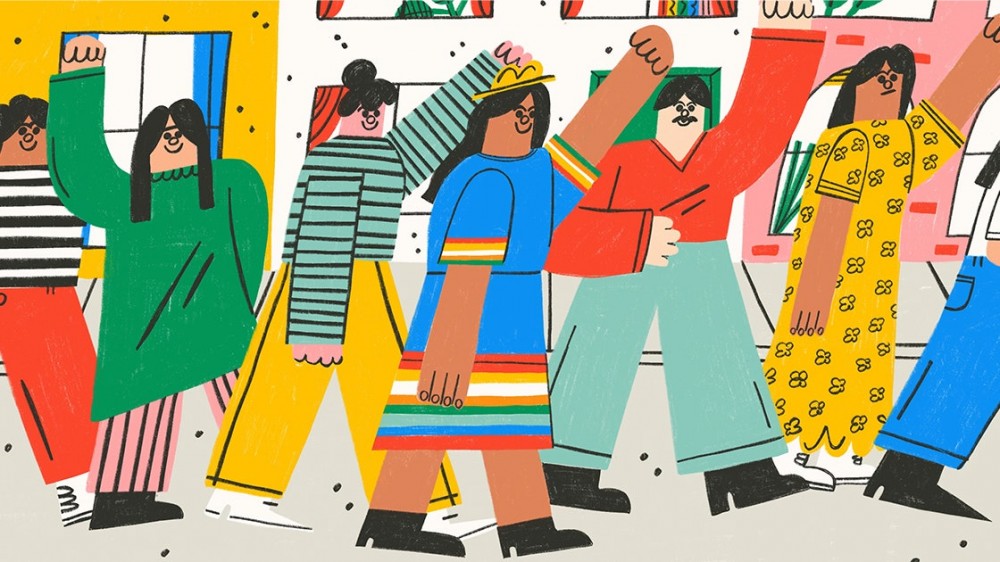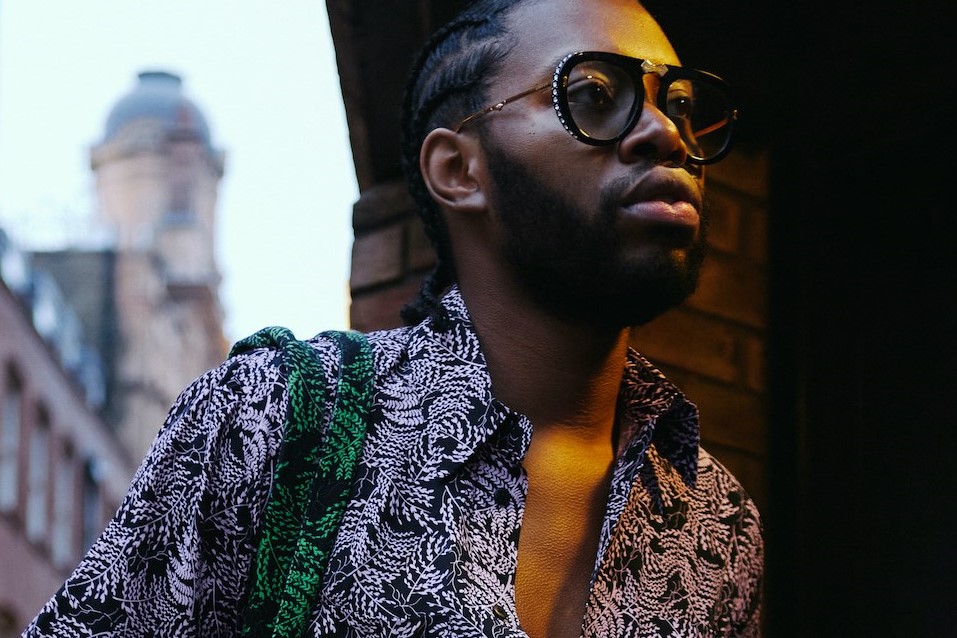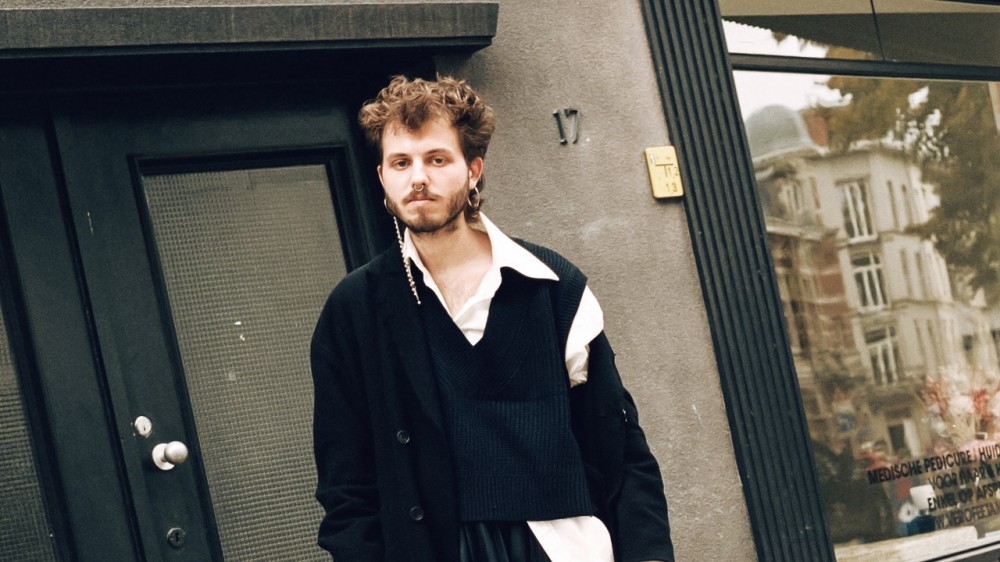
Indigenous Fashion Is More Than Tradition
Growing Up In Style is a series about the connection between fashion and local life in America, past and present.
I am a mixed-blood member of the Turtle Mountain Band of Chippewa, a tribal nation centered high in North Dakota, 10 miles from the Canadian border. My mother, Rita Gourneau Erdrich, sewed my clothes. Fashion starts in childhood. We instinctively love what is right for us. A dress of dark turquoise patterned with black flowers. A sparkling white pinafore with sunflower buttons. A pair of beaded moccasins made of tanned fawn skin, trimmed with red ribbon work. These were precious to me.
Like my background, my message has always been mixed. I went to college on a Native American Program scholarship wearing a denim miniskirt, brown tights, red cowboy boots, and my father’s knit oxblood teacher’s vest. In the ’70s, out of college, joining American Indian activists, I asked my mother for a ribbon shirt and a calico ribbon dress, which I wore with a treasured Borsalino hat from my Italian boyfriend. The hat was like the fedoras my Ojibwe grandfather, a tribal chairman, rocked in the 1940s. I wore the ribbon dress and hat to rallies in Fargo and marches in Washington, D.C., demanding that the United States, which has a government-to-government relationship with tribal nations, honor the treaties that our ancestors made in good faith. If it seems frivolous to dress in a certain way to register outrage or make a political point, just look at the Native leaders of that time. They knew then, and Indigenous protesters know now, that to display pride in our traditions is a powerful statement.
For a time, as a young mother and writer consumed by care, I let my husband choose my clothes and even my hairstyle. I became a sedate Catholic matron for a few years. But then my mother sensed I needed to return to her protection. She made a dark-green dance shawl for me, patterned with prairie roses and beaded vines. A Turtle Mountain friend painstakingly sewed a traditional jingle dress for me, black with embroidered dragonflies, for courage. More recently, another Turtle Mountain friend gave me a blue skirt patterned with water droplets and appliquéd with Ojibwe flowers, a water skirt. I wore the jingle dress to dance with my daughters and other Native women at the George Floyd memorial in Minneapolis, and the water skirt comes with me on book tours.
In our traditions, women are in charge of water. These calico skirts, made opulent with stripes of satin ribbon, visibly state our responsibility. Peggy Flanagan, White Earth Band of Ojibwe and our lieutenant governor here in Minnesota, proudly wears her water skirts and is loudly opposed to the Line 3 pipeline, which would disrupt our wild-rice beds, cross the headwaters of the Mississippi River, and contribute immeasurably to climate chaos.
Indigenous people create tribally specific clothing for many reasons—to express belonging, enter ceremony, show resistance, and to dance. Most important, I think our clothing makes a simple point. We are still here. There are 574 federally recognized tribal nations in the U.S. What we wear is unique to our particular tribal background. As I say, my look is always mixed but includes Chippewa, Ojibwe, or Anishinaabe influences, as well as Métis woodland-based patterns and complex flower beadwork. This style has been most beautifully interpreted by Métis artist Christi Belcourt, whose painting Water Song was used as the basis for several Valentino pieces in 2015.
In writing this, I don’t want to invite the careless to don Indigibberish outfits like fake eagle-feather headdresses or plastic–bone pipe breastplates. So I’m going to divide Native apparel into two categories: sacred traditional and contemporary Native fashion. In the first category, there is the jingle dress, a healing garment that incorporates metal cones. The shaking of the cones is mesmerizing; the sound is meant to heal. The Mille Lacs Indian Museum and Trading Post in Minnesota is hosting a show on the jingle dress, curated by Brenda Child, Red Lake Nation, that includes a dress made from a woman’s police uniform. The artist Maria Hupfield, Wasauksing First Nation, has created a jingle dress of regular blue-lined writing paper, printed with the names of over 500 North American Indigenous authors. Families all over Indian Country pool resources to outfit their powwow dancers in mind-blowingly elaborate regalia that is unrepeatable and impossible to mass-produce. How do you manufacture love?
In the second category, there’s cushy footwear, perfect for working at home. As I write this, I am wearing a pair of moccasins from Manitobah Mukluks, an Indigenous-owned company. The owner of Beyond Buckskin, Jessica Metcalfe, Turtle Mountain Chippewa, sources grassroots designers who incorporate Ojibwe language into objects available from her online store. The nonprofit Honor the Earth sells bold graphic designs that anyone can wear to show solidarity with the Native fight for climate justice.
These days, the only way I have to express Indigeneity in public life is to wear jewelry, especially beaded earrings, on Zoom appearances. Wheels of antique beads made by Pe Hin Sa Win, Red Hair Woman, give me the comfort of a family friend. Josef Reiter’s heavy Anishinaabe silverwork cuff gives me strength. Sweetgrass-trimmed birchbark circle earrings from my oldest daughter remind me to use our language. Another daughter made me a golden eagle–winged medallion that illustrates my Ojibwe name.
I know who makes the special things I wear. I know the history of each design. Each piece has meaning that gives depth to the moment, to the day, to my life. I wear adornment that keeps me close to my origins and to the earth; I have a rich connection with the people who make my favorite garments and jewelry. And I feel extra satisfaction when I wear something that expresses that relationship and also expresses me. Isn’t that supposed to be what fashion is about?
Louise Erdrich is the author of over 20 books, including the National Award-winning novel The Roundhouse.



